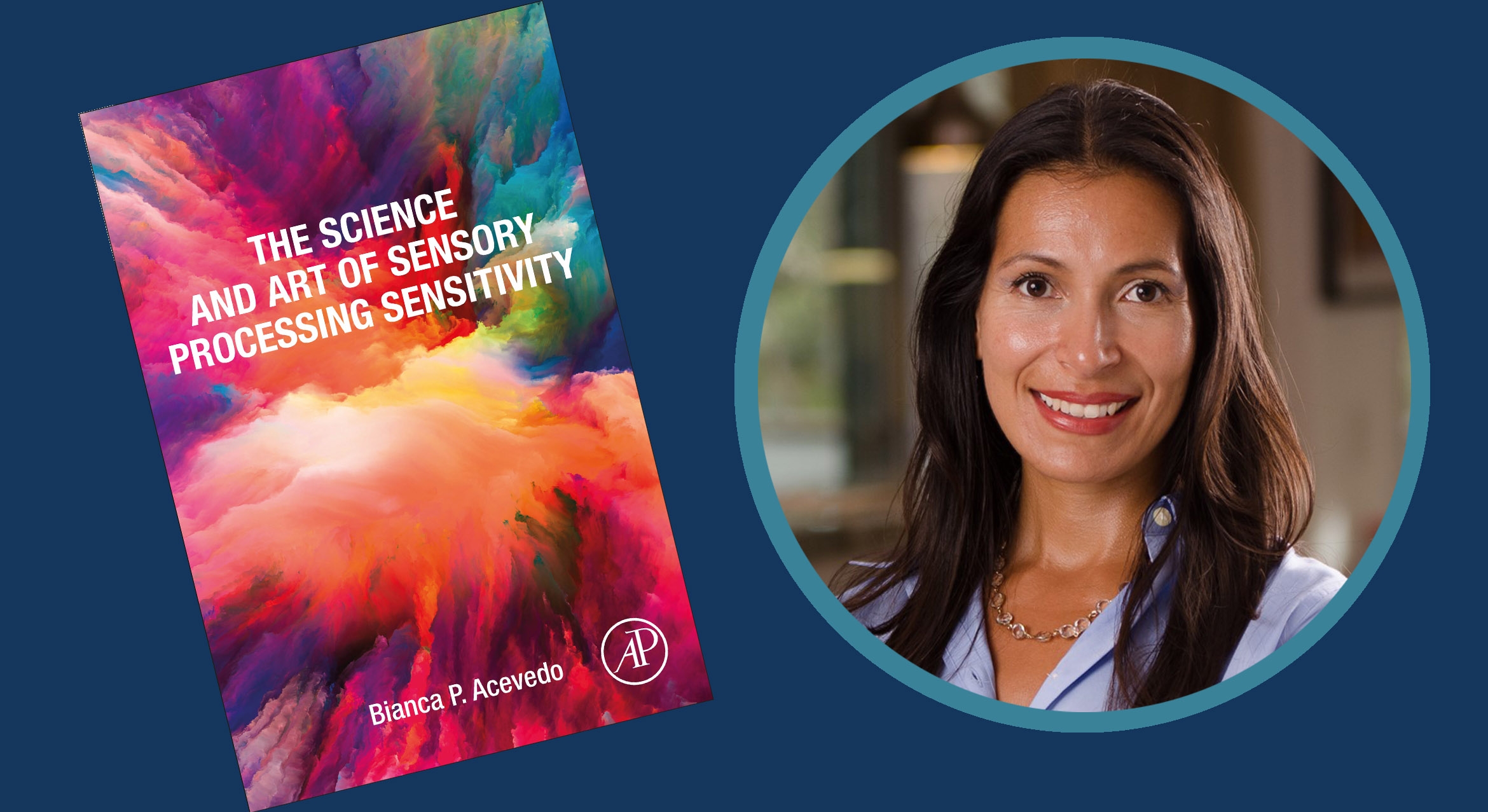
Neuroscientist Bianca Acevedo examines the impact and challenges of sensory processing sensitivity
For most people, the activities of daily life — commuting to and from work, running errands, having dinner with friends — are just part and parcel of being in the world. But for those with sensory processing sensitivity, a biologically-based temperament trait, it’s an entirely different story.
These individuals are particularly responsive, reflective and, well, sensitive, to stimuli in their environments, and when too much is coming at them at once they can become overwhelmed, exhausted and distressed.
In her new book, “The Science and Art of Sensory Processing Sensitivity” (Elsevier, 2024), UC Santa Barbara neuroscientist Bianca P. Acevedo explores the science of sensory processing sensitivity (SPS) and mechanisms that link high sensitivity with depression, anxiety and burnout. In addition, she explains how high sensitivity intersects with personality, and how culture, gender, living conditions, the work environment and aging can impact the expression of high sensitivity.
“It’s not a disorder,” Acevedo, a researcher in the campus’s Department of Psychological and Brain Sciences, said of SPS. “It’s a different way of processing information.” Highly sensitive people process information more deeply, she noted, and because of that they are more affected by their environmental stimuli.
“Because they have this way of processing information in a deep way, they tend to become overtaxed by having too many things going on at once, even if those things are positive,” she explained. “They tend to become over-stimulated, overwhelmed and they tire more easily than people who are less sensitive. That has a variety of implications for everything — work, relationships, everyday things.”
According to Acevedo, SPS is found in 20 to 30% of humans and has been observed in roughly 100 other species. It has a genetic component, and in studies involving twins, it’s been shown to have a heritability rate of about 40%. “It’s a trait that’s heritable, but it’s not completely determined by our genes,” she noted. “It’s influenced by our environment. And environment plays a big role, especially for highly sensitive people because they are affected by everything, both for better and for worse.”
While SPS is not a condition that calls for formal diagnosis and treatment, Acevedo said that being aware of its existence enables highly sensitive people to navigate their environments — and their lives — more effectively. “If you are highly sensitive and you know it, you can make modifications. Highly sensitive people can be very social,” she noted. “They need their friends; they need their families. But they can become overwhelmed in situations that don’t affect other people the same way.”
In fact, she added, being highly sensitive is strongly correlated with openness, a trait associated with cognitive flexibility and having an “open orientation to things in their environment.”
“The Science and Art of Sensory Processing Sensitivity” is a follow up to Acevedo’s first academic volume, “The Highly Sensitive Brain: Research, Assessment, and Treatment of Sensory Processing Sensitivity” (Academic Press, 2020). While her first book was aimed at an academic audience, this new volume leans away from theory and measures and focuses on the intersection of SPS with other personality traits and with general wellbeing. “The common issue that many highly sensitive people report is having a lower quality of life and less positive emotions and life satisfaction,” Acevedo said. “So, a helpful aspect of the book is that it offers a variety of cognitive strategies for building resilience and self-regulatory processes for helping highly sensitive people manage stressors.”
One strategy, for example, is called cognitive reappraisal — or, finding the silver lining in a given situation. “It’s taking a situation that could be potentially stressful or distressing and creating a narrative for ourselves in a positive way to sort of lighten the load of the stressor,” she explained. Other strategies include meditation, yoga and mindfulness practices.
Acevedo came to the study of SPS from a “relationships background.” Her doctoral dissertation centered on the neuro-correlates of long-term love, and as a postdoctoral researcher at UC Santa Barbara she went on to study newlyweds with Nancy Collins, a professor of psychological and brain sciences.
“We were examining what happens in the brains of first-time newlyweds when they transition into marriage,” Acevedo explained. “Professor Collins specializes in attachment and social support, so we were interested in studying empathy and how the spouses respond to one another behaviorally, either supporting each other or being happy for one another.”
The researchers collected data via observation in the lab — watching individuals’ reactions to one another — as well as through brain imaging, examining how they respond to pictures of their partner’s happy, sad or neutral face.
“This lent itself to studying empathy and its correlates with high sensitivity,” Acevedo said. “And we found that the more sensitive individuals showed greater activity in areas related to awareness, empathy and getting ready to act — the pre-motor areas of the brain. So that offered a different window into what being highly sensitive is and how we respond to one another.”
Another interesting finding from that brain study, she noted, is that the more sensitive participants were, the greater the activity was evoked in reward areas of the brain. “Areas that are associated with primary rewards, such as food,” Acevedo said. “And when they saw their partners smiling, the more sensitive people showed even greater activity in those areas of the brain.”
That in turn provided a different understanding. “If someone is highly sensitive, they show more activity in areas of the brain related to awareness and to visceral sensations like in the gut — those kinds of sensory and intuition, when they view emotional stimuli.”
And vice versa.
“In another study, we asked participants about the quality of their childhoods,” Acevedo said. “And we found that when those who reported a difficult childhood saw something negative, the more sensitive participants had a decrease in activity in the areas associated with reward. But if they had a positive childhood, that effect wasn’t demonstrated. Instead, they showed more activity in the prefrontal areas related to cognitive processing and self-regulation.”
The conclusion, according to Acevedo: “It highlights that at the level of the brain, highly sensitive people respond differently. It also highlights how significant and lasting the childhood environment is, and that even as adults they are showing these different patterns of response.”
andrea.estrada@ucsb.edu




